My dear brothers and sisters in Christ,
Today is the Feast of the Ascension and it is also World Communications Day. It seems appropriate that in the first reading from the Acts of the Apostles we hear the risen Lord sending his disciples to communicate the good news not just in their own city or in their own country but throughout the world. He says:
You will be my witnesses, not only in Jerusalem, but throughout Judea and Samaria, and indeed to the ends of the earth.
This is the mission of the Church in every generation – to communicate to all people, Christ’s forgiving love for all people, and that in him we are drawn into a relationship with the Father. This is the mission of our diocese. It is the mission of every parish in the diocese and it is the mission of each baptised person present here today.
While the message we communicate remains the same, as times change and circumstances change, the ways in which we communicate that message differ. Our plans, priorities and structures need therefore to meet the challenge of adapting in order to communicate Christ’s message effectively. That is why in Lent 2005, I invited you to a consultation gathering in your area to identify some priorities in that regard. From those gatherings, a diocesan pastoral plan has been formed, with nine working groups focusing on the areas of:
- faith formation
- prayer and spirituality
- meaningful liturgy
- youth ministry
- family ministry
- the role of women in the church
- outreach and ecumenism
- care of priests
- parish and diocesan structures
It is this last of these areas, the area of parish and diocesan structures, that I particularly want to address at this time.
Another urgent reason for considering clustering, rationalisation, new parish structures and ministries is that that the diocesan clergy as a body are declining in numbers and rising in age profile. We are fortunate in this diocese to have the generous assistance of many clergy of religious orders in parish and diocesan ministry. However with regard to diocesan priests of the Archdiocese of Armagh, of which there are 138, the simple statistics are these:
- 30 are 75 and over (many still in active ministry)
- 44 are aged 60-74
- 46 are aged 40-59
- 18 are under 40 years of age
It is therefore possible that, even though there has been a slight upward trend in vocations to the priesthood in the last couple of years, fifteen years from now there may well be less than seventy-five priests in the diocese under the age of seventy, with only twenty-five of them being under sixty in a diocese that presently has sixty-one parishes. It is imperative that parish reorganisation, i.e. clustering, rationalisation, new parish structures and ministries be addressed in order to take into account the reality of the decline in the number of priests.
How is this to be progressed? The team responsible for looking at parish and diocesan structures has put together a consultation document entitled ‘Moving toward Parish Reorganisation in the Archdiocese of Armagh 2007-2010: Clustering, Rationalisation, New Parish Structures and Ministries.’ This document outlines the practical steps that will be necessary and explores important questions which include:
- What do we mean by clustering, rationalisation, new parish structures and ministries?
- Are we convinced of the need to do it?
- Are we committed to it?
- Have we the capacity to do it?
A proposed process and timeline for taking on this work has been outlined. I consider it a priority that the working team has identified the need to consult with you, the people of the parishes, about these matters as part of the process. It is therefore envisaged that a consultation exercise be held in each parish between January 2008 and Easter 2009. I invite you to participate in that consultation in your parish when it occurs.
The working team responsible for looking at parish and diocesan structures, in its first year, devoted much of its time and energy to the formation of parish pastoral councils. This is because in the consultation process of Lent 2005 you identified the need for a parish pastoral council to be formed in every parish in the diocese. I wholeheartedly support this aspiration. In response to it, the working team has created a successful process for the formation of pastoral councils. I am delighted that this process has been working effectively in many parishes in the diocese, led by the Office of Pastoral Renewal and Family Ministry. I pray God’s blessings on all parish pastoral council members and thank them for their generosity and commitment. I wish, also, to express my ongoing hope that in the near future, every parish in the diocese will have a reflective, considerate and active parish pastoral council in place.
Much of the work in parishes with regard to parish pastoral councils is now being carried out by the Office of Pastoral Renewal and Family Ministry. This means that the team responsible for parish and diocesan structures has been able to turn its attention to another area of concern that was also highlighted by you in the Lent 2005 consultation process. This area of concern is the need for clustering, rationalisation and the formation of new parish structures and ministries. We have, as a diocese, been exploring for some time what is involved in this. The way forward has not yet fully emerged.
There are many reasons for addressing the need to consider clustering, rationalisation and new parish structures and ministries at this time, but for now I present to you two of the most compelling.
One of the developments we have witnessed, arising out of the Second Vatican Council, has been the expanding theology of the involvement of lay people in the service of the Church. The shift in our understanding of ministry as based on baptism is gaining wider understanding and acceptance. The result is that greater development in the area of lay ministry is beginning to take root. There is a growing awareness that the Church is a living, Spirit-filled body with many parts, all of which need to work together to build up the Body of Christ. With a new emphasis on collaboration the time is right, therefore, to engage lay people increasingly in pastoral and administrative leadership and ministries in parish communities. This is already happening at diocesan level with the appointment of lay people to significant full-time posts in the diocese. Debra Snoddy is the co-ordinator of pastoral renewal and family ministry. Kate Acton is the diocesan youth director. Helen Forde is co-ordinator for the diocesan pastoral plan and John McVey is the diocesan finance administrator.
However, before we begin to consider the idea of parish reorganisation, which will include a period of consultation in each parish, I want to be sure that the steps taken are the right ones and that the timing of these steps is also correct. For this reason I am inviting the priests and each of the parish pastoral councils of the diocese to share their responses to the proposals contained in the consultation document, so that the way forward can be shaped in the light of their insights. In parishes where a parish pastoral council is not yet in place, the parish priest will be asked to bring together a group of twelve parishioners involved in parish ministry to share their responses to the document. These parish meetings, facilitated by two leaders from outside the parish, will be held in September. I will also invite the diocesan pastoral council and the religious in the diocese to share their reactions.
Throughout the month of September, the consultation document ‘Moving toward Parish Reorganisation in the Archdiocese of Armagh 2007-2010: Clustering, Rationalisation, New Parish Structures and Ministries’ will be available in a number of ways:
- by request from your parish
- online at www.parishandfamily.ie or
- by sending an S.A.E to Ara Coeli, Armagh, BT61 7QY.
You are welcome to share your answers to the questions posed in the document in writing and send them to my office at Ara Coeli, Armagh. The details are printed in the document.
For clarity I wish to stress that this initial consultation with the priests and parish pastoral councils is to discern that the approach being taken with regard to parish reorganisation is appropriate. Decisions that may be taken later will also reflect consultation at parish level, in which you will have had an opportunity to participate.
Prayer for the success of this venture will be essential. I ask each and every one of you to include the success of this venture in your prayers so that in the times and circumstances of today and tomorrow, we will be able to continue to carry out our mission of communicating with all people Christ’s enduring love for them.
With every blessing and good wish,
+Sean Brady
Archbishop of Armagh
Moving toward Parish Reorganisation in the Archdiocese of Armagh 2007-2010: Clustering, Rationalisation, New Parish Structures and Ministries.
 Bless us, O Lord, with perseverance. The seeds we are sowing grow slowly; teach us to be patient and to trust.Almighty God, through our baptism you have called each one of us to yourself. We journey with you to be a renewed church. We ask that you empower us to love as you loved and to serve as you served.
Bless us, O Lord, with perseverance. The seeds we are sowing grow slowly; teach us to be patient and to trust.Almighty God, through our baptism you have called each one of us to yourself. We journey with you to be a renewed church. We ask that you empower us to love as you loved and to serve as you served.

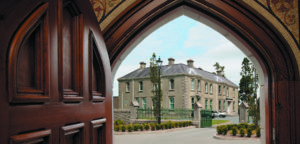
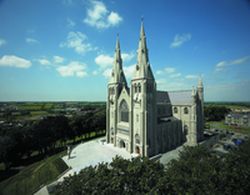
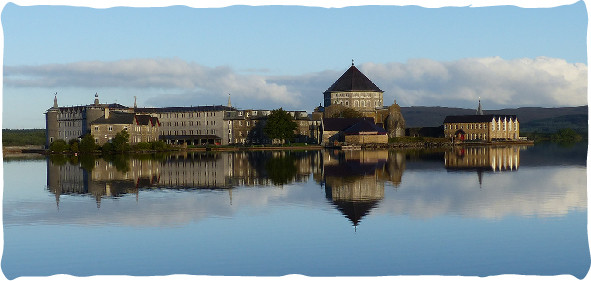

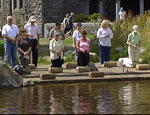
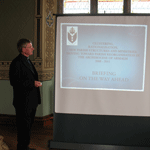
You must be logged in to post a comment.